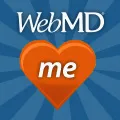
Beef has gotten a bad rap. Too much red meat can contribute to a variety of health problems, though it's not the meat that's necessarily the problem; it's the way the animal is raised (and how much of it you're eating!). Cattle used to be raised on pasture year round, from birth to slaughter, where they fed off the natural grasses and hay that grew on the land. Cows are ruminants and are by nature vegetarians.
In recent years, though, cattle production has become more centralized and most animals are now “finished” on feedlots. Finishing is the process of preparing animals for slaughter – the length of time an animal is finished depends on the practices of the farmer. The longer the finishing time, the higher the chance the animal is being raised on a factory farm.
Factory farm feedlots are usually large, confined areas where cattle are finished before slaughter. Massive amounts of feces and urine are accumulated in this confined area after the cattle are fed large amounts of grain and byproducts such as outdated human food, dairy products, chicken litter (which contains manure, feathers, bedding materials, and possibly scraps from dead animals), as well as other byproducts that are cheap and readily available. These types of feed additives are not healthy for the animal.
The practice of feeding cow parts back to cattle spreads mad cow disease, a highly infectious disease that kills a cow by destroying the animal's brain. The practice was banned in 1997, but several loopholes in the regulations leave open the possibility that cow remains could be fed back to cattle. (Cows are by nature vegetarian and should not be fed any type of animal product.) Over a hundred cases of the human form of mad cow disease have been documented and have been attributed to eating meat from infected animals.
All animals that are given feed additives should be avoided – in cattle, the most common additives are hormones that are implanted in the animals to make them grow faster and non-therapeutic antibiotics, which are fed to the animals in low doses to help ward off disease. There are a variety of health issues associated with these practices.
Another problem with today's meat supply is the meat inspection system and slaughterhouses. To increase profits, line speeds have been increased dramatically, to the point where workers in processing facilities are said to have one of the most dangerous jobs of all. Injuries are very common. The facilities are also unsanitary, making the meat more susceptible to such pathogens and bacteria like e.coli and salmonella. To make matters worse, the meat inspection system is now more focused on paperwork, instead of visually inspecting meat.
Instead of trying to solve the problems plaguing the meat industry, food irradiation is being touted as the solution. Food irradiation is a process where high levels of radiation are shot through the meat to kill off bacteria. It is a controversial process that destroys the nutrient content of the food and creates new compounds that have not been tested for safety.
Farmers that practice sustainable methods of agriculture raise their cattle on pasture and either feed them grasses only, or supplement the grasses with controlled amounts of grain. By controlling the amount of grain fed to the animal, the meat will still have the marbled texture and flavor that most consumers are used to (meaning the meat will have the fat in it that gives it the taste we are used to), but the animal will not get sick from eating too much grain. A general guideline to remember is that the more grain fed to the animal, the more fat in the meat; and the more fat in the meat, the less healthy it is for you.
For more great information on how you and your family can make healthy food choices, go to the Sustainable Table

